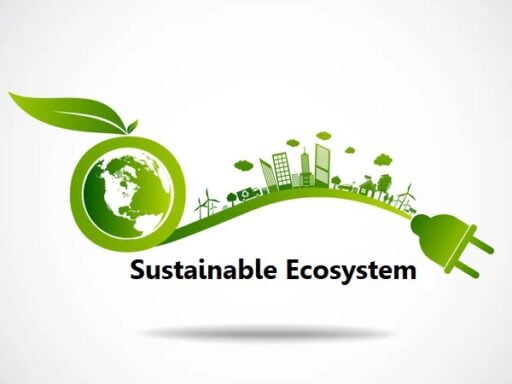In the present rapidly changing business landscape, the concept of business ecosystems has undergone significant transformation. Business ecosystems have evolved from hierarchical structures to interconnected networks. This change reflects new paradigms of collaboration, innovation, and competition. As businesses navigate these dynamic ecosystems, transparency has emerged as a critical factor in ensuring success and sustainability. Let’s look deeper into the changing dynamics of business ecosystems and how transparency is becoming more important in fostering growth and resilience.
Understanding Business Ecosystems: From Silos to Interconnected Networks
The days of autonomous firms functioning in isolation are over. Business ecosystems increasingly include a complex web of interrelated enterprises, suppliers, customers, and partners working together to develop and deliver value. These ecosystems cross industrial borders, bringing together a varied range of stakeholders with complementary skills and resources. Businesses within ecosystems can react to market changes faster by cultivating symbiotic partnerships. They can also generate innovation and capitalize on emerging possibilities by harnessing collective capabilities. Navigating interconnected networks requires a fundamental change. Toward transparency and collaboration we must move, with traditional hierarchies yielding to agile, adaptable, and inclusive ecosystems.
In today’s interconnected world, the dynamics of business ecosystems have changed dramatically. Firms can no longer operate independently in isolation; instead, they are embedded in intricate webs of interconnected organizations, suppliers, consumers, and partnerships. These ecosystems go beyond typical industrial borders, bringing together various stakeholders with complementary talents and resources. Businesses that operate inside such ecosystems have the advantage of being able to respond quickly to market changes by cultivating symbiotic relationships. They can also foster innovation and capitalize on emerging possibilities by harnessing their collective strengths. However, navigating these interwoven networks necessitates a fundamental shift in transparency and collaboration. Traditional hierarchies must give way to nimble, adaptable, and inclusive ecosystems in which openness and cooperation are critical to success.

Support Transparency in Evolving Business Ecosystems
Transparency is at the core of successful business ecosystems, providing the framework for confidence, responsibility, and shared value generation. In today’s hyperconnected world, stakeholders want more insight into ecosystems’ inner workings, from supply chain operations to decision-making processes. Transparent communication channels, open data exchange, and ethical business practices are critical to establishing and maintaining confidence among ecosystem players. Businesses that promote openness can improve risk management, find possibilities for collaboration, and stimulate collaborative innovation. Furthermore, transparent ecosystems attract like-minded partners and customers that share common ideals, resulting in long-term growth and sustainability.
Transparency is at the heart of successful business ecosystems, laying the groundwork for trust, accountability, and shared value creation. As stakeholders demand deeper insight into ecosystems’ inner workings, from supply chain operations to decision-making processes, open communication channels become increasingly important. Open data interchange and ethical business practices are crucial for building and maintaining trust among ecosystem stakeholders. Businesses that value transparency can improve risk management while also identifying possibilities for collaboration and stimulating collaborative innovation. Furthermore, transparent ecosystems attract like-minded partners and customers that share common goals, resulting in long-term growth and sustainability.

Leveraging Technology to Improve Ecosystem Transparency
Advancements in technology are critical to increasing openness within corporate ecosystems. Blockchain, IoT (Internet of Things), AI (Artificial Intelligence), and data analytics are transforming the way information is exchanged, validated, and used across ecosystems. Blockchain technology, for example, allows for safe and transparent transactions, supply chain traceability, and smart contracts, which fosters trust and accountability among ecosystem players. IoT devices provide real-time visibility into operations, allowing for proactive decision-making and optimal resource allocation. Similarly, AI-powered analytics provide actionable insights that promote efficiency and creativity across ecosystems. Businesses that leverage these technologies can achieve unprecedented levels of transparency, agility, and resilience in today’s evolving business dynamics.

FAQs about Business Certifications
🤔 What are business ecosystems?
Answer: Business ecosystems are interconnected networks of enterprises, suppliers, customers, and partners that work together to develop and provide value that no single company could do on its own.
🤔 Why is transparency important in business ecosystems?
Answer: Transparency promotes trust, accountability, and shared value creation in business ecosystems. It enables stakeholders to make more informed decisions, uncover areas for working together, and foster collective innovation.
🤔 How can businesses foster transparency within ecosystems?
Answer: Businesses may promote transparency by embracing open channels of communication, sharing data publicly, following ethical business practices, and leveraging technological tools like blockchain, IoT, and AI to improve visibility and accountability.
🤔 What role does technology play in enhancing ecosystem transparency?
Answer: Blockchain, IoT, AI, and data analytics offer safe and transparent transactions, real-time visibility into processes, and actionable insights, resulting in increased efficiency, innovation, and trust among business ecosystems.
🤔 How do transparent ecosystems contribute to long-term growth and sustainability?
Answer: Transparent ecosystems attract partners and consumers who share similar values, improve risk management, encourage innovation, and foster trust and loyalty, all of which contribute to long-term growth, resilience, and sustainability.
🤔 What are some examples of transparent business ecosystems?
Answer: Transparent business ecosystems include cooperative platforms, open-source communities, and industry groups that share expertise, assets, and strategies for mutual benefit and innovation.
Conclusion
To summarize, the emergence of corporate ecosystems represents a paradigm shift toward linked networks of cooperation, innovation, and shared value generation. Transparency has evolved as a critical component in navigating these changing ecosystems, instilling trust, accountability, and resilience among stakeholders. Businesses that embrace openness can better adapt to changing market circumstances, encourage collective innovation, and capitalize on new opportunities.
Leveraging technology solutions like blockchain, IoT, and AI improves transparency by providing safe transactions, real-time visibility, and actionable analytics. Businesses that build transparent ecosystems can achieve long-term growth, sustainability, and success in today’s ever-changing business landscape.








